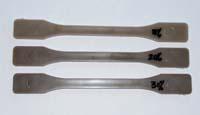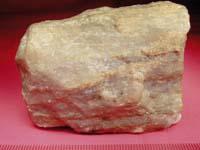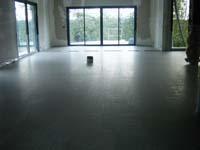Polyvalent side product

Since 1947, Derivatives of Fluorine S.A. (DDF) is a company dedicated to the manufacture of hydrofluoric acid and its derivatives for sectors such as health, chemistry, construction or food.
Hydrofluoric acid is generated in the reaction between sulfuric acid and fluorite. In this productive process a side product, anhydrite (dehydrated calcium sulfate) is generated. This side product is inert, that is, it does not react.
It is currently used in the manufacture of floors, mortars, etc. However, employees of the company Derivatives of Fluor S.A. want to find a wider way to take advantage of this secondary product that is generated in the process of producing hydrofluoric acid, also looking for several uses. In this regard, this Cantabrian company has recently collaborated with Gaiker-IK4 on an R&D project.
The aim of the project was to analyze whether synthetic anhydrite can be used in the environment and in the plastics industry. In fact, it has been tried to check whether the anhydrite can be used as a stabilizer in the processes of inertiation or reinforcement of hazardous waste, and if it can be used as a load in the formulation of certain types of plastics.
In order to inertiate or strengthen polluting and hazardous waste with environmental problems (in general, waste containing heavy metals), waste is stored for long periods of time in a location mixed with the additive. With the passage of time, the additive is retained in the residues and finally this mixture becomes inert residue. That is, easy to carry to landfill.
Studies conducted with this cantabrian company have shown that anhydrorite can be used as an addition. It is a good component of inertiation and solidification of waste. In fact, the contaminating residues are trapped in the anhydrite. In addition, once treated with anhydrite residues, they can be considered less dangerous. Therefore, they should not be carried to the corresponding landfills.

Manufacture of plastics
The studies of application of anhydrite in the field of plastics have also given good results. It is observed that anhydrite provides to the final product properties similar to conventional loads.
In general, plastics have a main matrix -- plastic material -- and loads. The loads are compounds that are added to the matrix. The addition of mineral loads to plastic material mixtures is a common practice in the plastics industry. These mineral loads, on the one hand, are used to reduce costs and, on the other, contribute in some cases to improve the mechanical properties of plastic according to the matrix used. Some of the most commonly used mineral charges are carbonates (normally calcium carbonate), caolin and mica.
In this study, it has been studied whether the final product used as anhydrite load in the manufacture of plastic products has the same characteristics as the final product, compared to products in which conventional loads are added to plastic material.
Fluor derivatives researchers have found that the addition of anhydrite to the plastic matrix gives rise to characteristics similar to those of the addition of calcium carbonate. Therefore, they have found that it also serves for it. The only difference is that they have been found in the color of the final products, and that can be changed using dyes.

Other cases in which anhydrite has been used previously have been those of great environmental interest. An example of this is: During the Prestige disaster, the members of Derivatives of Fluor offered anhydrite and supplied everything they wanted to encapsulate all that oil that appeared on the beaches of Cantabria. Previously, the use of anhydrite was proposed to deal with this type of catastrophes. This option was studied when the Erika boat was submerged on the British coast. In this case, the effort was suspended since the transport costs were very expensive to apply.
Undoubtedly, anhydrite has infinite uses. Those cited and many more. In this sense, researchers are investigating, so it is still possible to find new applications for anhydrite. Who knows it.





